Technical Digest: Jodo Kamae
copyright © 2008 Andy Watson, all rights reserved
While it is not my belief that Jodo can be taught through the written
word, I would like to provide clarity about some of the more basic
points of Jodo, hence the introduction of this technical digest section.
This first unit covers kamae, basic posture and comes with a slightly
interesting story. At the recent European Championships in Paris, the
Jodo delegation leader, Matsui Sensei, started the one-day seminar
looking at kamae and using a pair of white tabi to construct and
demonstrate the correct positions of the feet in the various kamae. At
first, most of us smiled and laughed to ourselves seeing this bodiless
pair of tabi on the floor but in fact it became a very valuable lesson
and it was seen time and again where people weren’t following these
basic rules. The immediate following of the Darlington Seminar also
showed that this basic understanding wasn’t consistent throughout. Many
of us yawn at such basic points, however, consistent implementation is
rare and the full reasons why these kamae are the way they are, is
seldom understood.
I will endeavour to explain these points as has been explained to me…
Shijo Kamae - Jo Postures
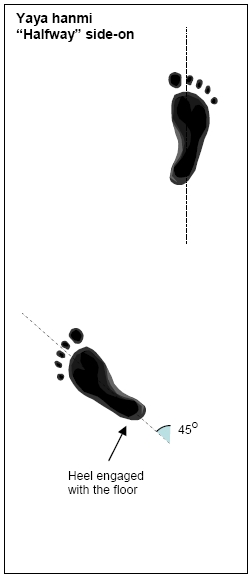 |
The first format of kamae after
normal standing-up straight, is Yaya hanmi. “Yaya” means a bit but in
this case is used in the context meaning “halfway”. Hanmi means “half
body” and refers to being side-on to your opponent. Yaya hanmi
therefore means halfways sideon or more simply 45 degrees to your
opponent.
The front foot should be straight and pointing to the front. The rear
foot should be turned 45 degrees with the heel on the floor. In this
posture the hips and upper body are also turned 45 degrees; this is
important as it allows the full length of the jo to be reached by both
hands without changing the direction the jo is pointing at. The rear
leg should be extended and the front leg naturally bent (see below). |
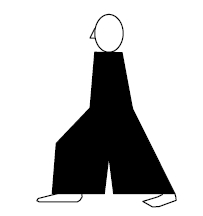
|
This position is used for the following techniques:
- Honte uchi (honte no kamae)
- Gyakute uchi (gyakute no kamae)
- Kaeshi zuki (at the end of the thrust)
- Gyakute zuki (throughout most of the technique)
- Maki otoshi
- Kuri hanashi (at the end of the throw)
- Tai atari (at the end of strike)
- Tsuki hazushi uchi (when striking and pressing forwards)
- Do barai uchi (during most of the technique)
- Tai hazushi uchi (at any point where the feet are not together)
Therefore it is easy to see that this kamae is used very frequently
throughout jodo practise and it is ultimately essential that one trains
ones body to assume this posture consistently when it is appropriate to
do so.
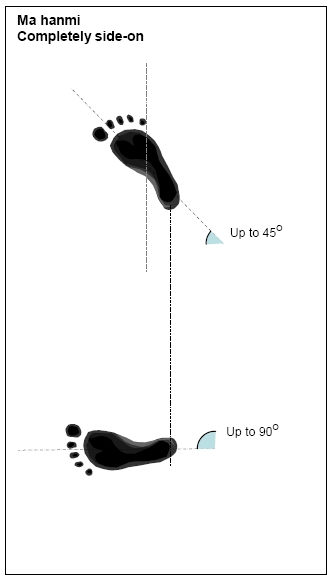
|
Ma hanmi means completely
side-on. This refers to the attitude of the hips and the upper body in
relation to the opponent. The position of the feet has some allowance
for variation as some teachers prefer the feet to be more or less
side-on to the opponent while others prefer a more forward attitude.
The trend seems to be moving towards the latter as shown in the diagram.
With the body turned completely 90 degrees, the front foot is inclined
naturally towards the front but only up to about 45 degrees; any more
makes it difficult to maintain the side-on attitude of the hips.
Ideally the rear foot should be turned at 90 degrees and no more;
turning it less, say 45 degrees to the opponent, is acceptable provided
it does not compromise the sideon attitude. It does however seem most
natural to keep the rear foot at 90 degrees. In this attitude the heels
are more or less in line with each other. The head should be turned to
face completely towards the opponent. Again, the rear heel is on the
floor. The rear leg should be extended and the front leg bent naturally
(see below). |
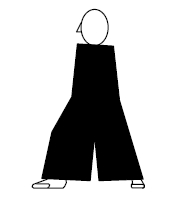
|
This position is used in the following basic techniques:
- Hikiotoshi uchi (hikiotoshi no kamae)
- Kuritsuke (on the catch and trap)
- Kurihanashi (on the catch)
- Tai Atari (on the catch)
- Tsuki hazushi uchi (on avoiding the thrust)
- Do barai uchi (on the block)
While this kamae is used less than yaya hanmi in the tandoku dosa, it
crops up time and time again in the kata. It is of absolutely necessary
to make a clear distinction within the kata between this kamae and yaya
hanmi – mixing the two up makes for loss of shiai, failure of
examination and creation of bad habits.
Uchidachi Kamae – Sword Postures
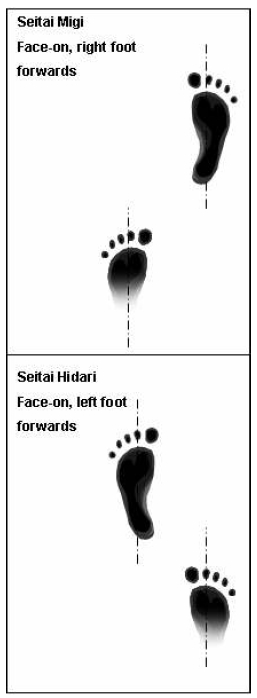
|
For the tachi, the postures are
slightly similar although no less
important. During the majority of practise, especially during the
approach and during an attack, the posture is known as Seitai, or
straight-on. In this posture, the feet should both be parallel with the
heel of the rear foot raised off the floor. This should be a small
amount of raise such that rather than tipping the body forwards, it
provides a tension in the rear leg which when released (by for example,
lifting the front foot) drives the hips and body forwards.
There are exceptions to this posture such as when receiving a technique
from the jo such as kuritsuke, hikiotoshi etc but during any attacking
kamae such as chudan or hasso , the feet must be in this position.
The hips and body in seitei of course are facing the enemy square on.
The front leg is naturally bent with the rear leg extended (see below). |
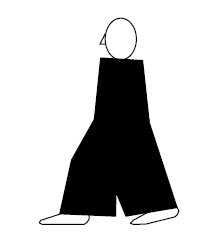
|
Given the emphasis on the importance of correct kamae at an event as
important as the European Championships, it would seem prudent to
ensure that the assuming of correct kamae is a fundamental and regular
part of one’s Jodo study.
This article was originally published
in the Jodobu News and Update 8th December 2007. Reprinted with
permission.
Andy Watson is the Jodo Bucho for the
British Kendo Association.





